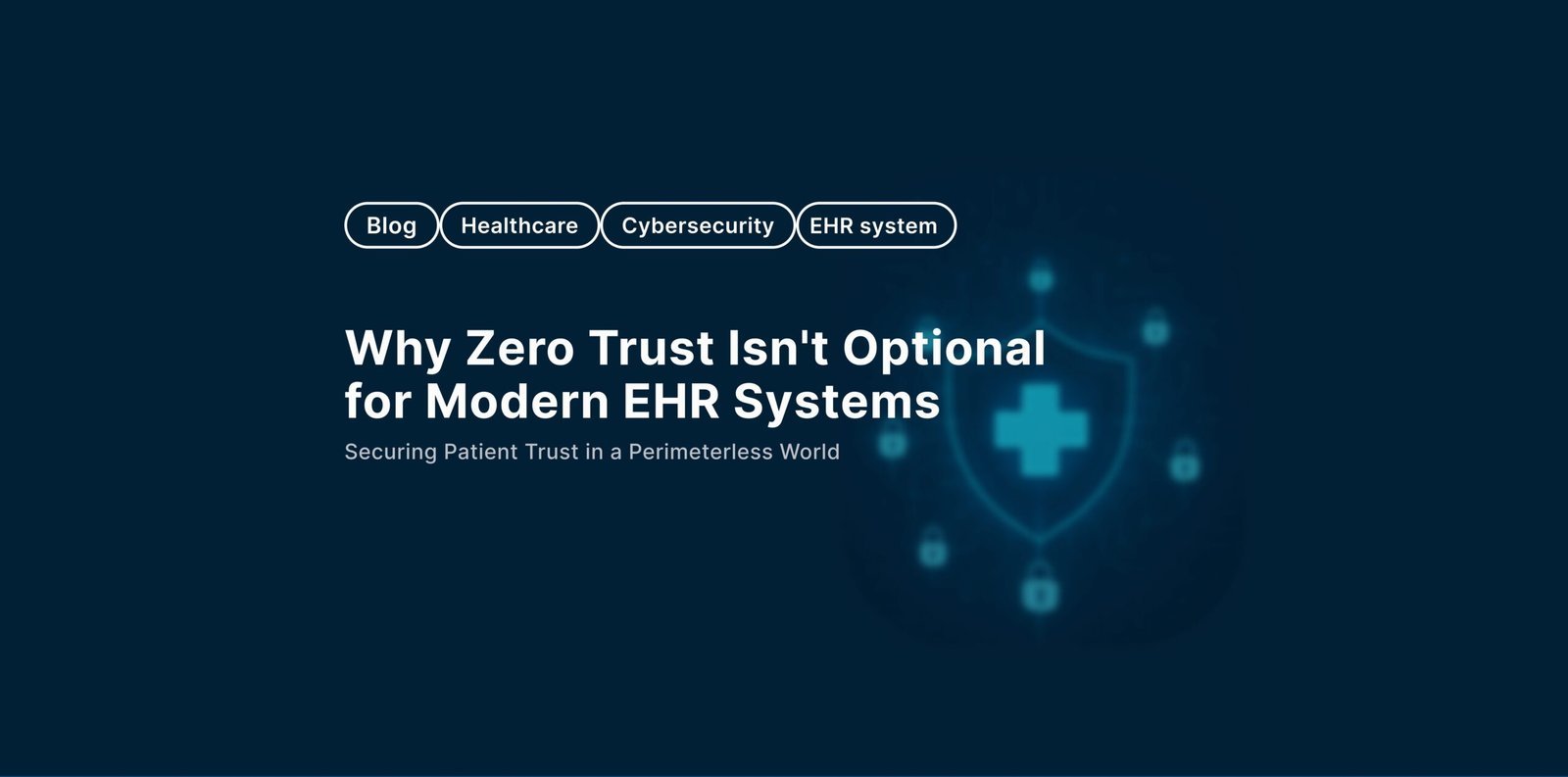✆ + 1-646-235-9076 ⏱ Mon - Fri: 24h/day
Why Zero Trust Security Is Critical for Modern EHR Systems


Zero trust security for EHR systems has become essential in a healthcare world full of growing cyber threats, cloud platforms, remote access points, and complex compliance demands. Traditional security approaches no longer offer adequate electronic health records protection, leaving providers open to costly breaches and patient safety risks.
🔥 Key Reasons Zero Trust Is Critical for EHR Data Protection
Sensitive Nature of Health Records
Electronic health records (EHRs) store extremely sensitive information—personal identifiers, medical history, insurance data, and more. This makes them prime targets for attackers. Zero trust architecture in healthcare ensures that EHR data protection is continuous, contextual, and verifiable at every access point.
Complex Access Ecosystems in Healthcare
In hospitals and health systems, access to records is needed by a diverse range of professionals. Without least privilege access for EHRs, clinicians often receive excessive permissions. Zero trust in healthcare environments addresses this by continuously adjusting permissions based on behavior, role, and context.
🚨 The Cost of Ignoring Healthcare Cybersecurity Principles
Every healthcare cybersecurity breach puts patient lives and trust at risk. According to IBM, the average cost of a healthcare data breach is nearly $11 million. Implementing zero trust security for EHR systems directly reduces the attack surface, especially when paired with strong EHR access control best practices.
📘 HIPAA Compliance and Zero Trust: A Natural Alignment
HIPAA regulations call for strict technical safeguards and data accountability—making zero trust security a perfect match. From EHR access control to encrypted data transfer and user verification, zero trust provides the architecture needed to meet and exceed HIPAA compliance requirements.
The High Cost of EHR Data Breaches
The healthcare industry suffers the highest average breach cost at $10.93 million per incident, per IBM’s 2023 report. Consequences include:
- Disrupted care and delayed treatments
- Regulatory fines under HIPAA, GDPR, and others
- Long-term loss of patient trust
- Operational shutdowns and service diversion
🔗 Example: CommonSpirit ransomware attack (2023) affected 140+ hospitals and cost over $150 million.
Enter Zero Trust: A New Security Paradigm
Zero trust eliminates implicit trust. Instead of assuming users or devices inside the network are safe, zero trust frameworks enforce strict access validation at every interaction. Key pillars include:
- Verify users and devices continuously
- Grant least-privilege access
- Monitor all traffic and user behavior
- Assume breach by default
- Contain and isolate threats rapidly
By design, zero trust for healthcare IT offers stronger defenses aligned to the unique sensitivity of electronic health records.
Why Zero Trust Is Non-Negotiable for EHR Systems
1. Unmatched Data Sensitivity
EHRs contain everything from biometric data to billing information—making them 50x more valuable than credit cards on the dark web. Zero trust ensures every access attempt is scrutinized, regardless of origin.
2. Complex Access Needs
Clinicians, administrative staff, and third-party vendors require segmented, dynamic access. Zero trust applies context-aware controls to meet these diverse needs while enforcing least privilege.
A 500-bed hospital may manage 15,000+ user identities. Without automation and zero trust logic, over-permissioned access becomes inevitable.
3. Regulatory Compliance
HIPAA, GDPR, and CCPA demand strict security controls. Zero trust naturally supports:
- Role-based access with audit trails
- Behavioral analytics
- Granular logging and breach detection
- Real-time enforcement of policy
4. Critical System Availability
Healthcare operations can’t afford downtime. Zero trust includes crisis-mode provisions, allowing emergency access with logging. This preserves both care delivery and accountability.
5. Automated Role-Based Access
Zero trust allows dynamic access provisioning. Platforms like EHR CyberSecure use AI to automate identity changes — ensuring terminated or transferred employees don’t retain access.
Results: 64% fewer unauthorized access attempts, 78% less IT workload.
How to Begin Your Zero Trust EHR Journey
Start with high-impact changes:
- Map EHR data flows and user roles
- Enforce multi-factor authentication (MFA)
- Implement micro-segmentation and endpoint controls
- Restrict access to “just enough, just in time”
- Deploy real-time monitoring and anomaly detection
- Secure API and third-party access channels
🔗 More information: NIST Zero Trust Architecture Guidelines
Overcoming Implementation Challenges
Yes, challenges exist:
- Legacy software compatibility
- Clinical usability concerns
- Limited IT budgets
- Cultural resistance to new access controls
But phased rollouts focused on high-risk areas show the strongest ROI. Combining technical modernization with staff education creates long-term resilience.
Zero Trust in Action: Success Stories
✔️ A Midwestern hospital cut unauthorized EHR access by 78% within 6 months using identity verification and session monitoring.
✔️ Another health system isolated a phishing attack before patient data was accessed, thanks to zero trust segmentation and behavior-based alerts.
Take the First Step Toward Zero Trust
It’s not about whether your organization can afford to adopt zero trust—it’s about whether you can afford not to.
🎯 Start Now:
✅ Download our Zero Trust EHR Checklist to assess gaps
✅ Prioritize quick wins like MFA and behavioral monitoring
✅ Build internal alignment and phase deployment by risk level
Conclusion: A Secure Future for Patient Data
The healthcare threat landscape is evolving. Regulatory demands are tightening. Attackers are more sophisticated. Zero trust security isn’t a trend—it’s a requirement.
Organizations that embrace it not only protect their systems but also their patients’ trust, privacy, and lives.